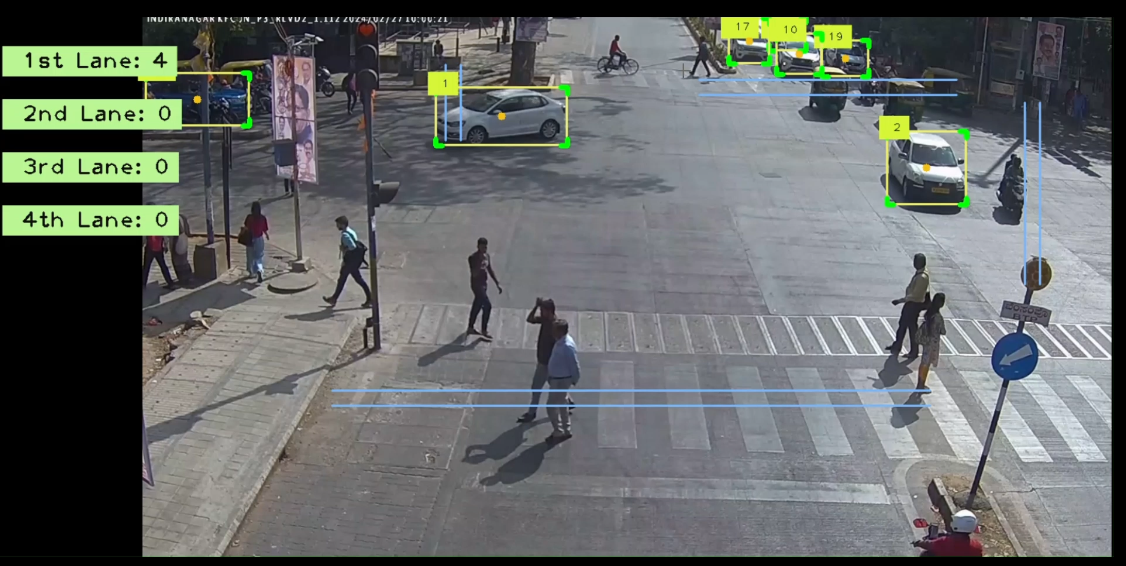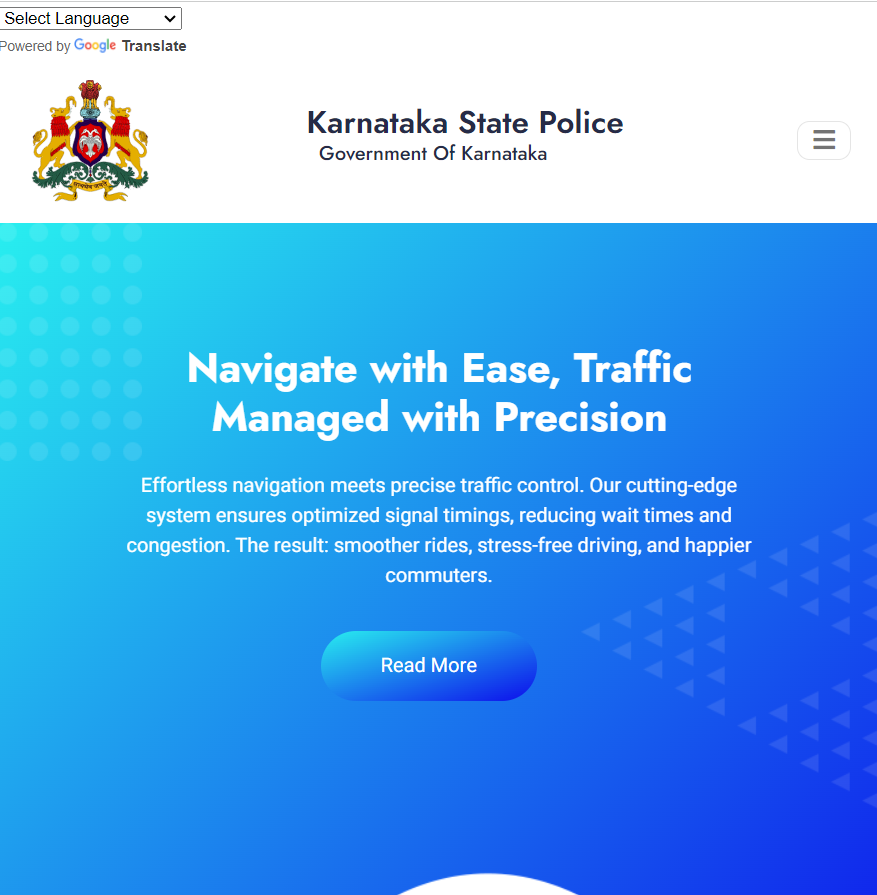Traffic Flow Optimization System
- Tech Stack: NodeJs, JavaScript, MySQL,Machine Learning , Python , HTML , CSS , React.js , Firebase .
- Visit Our Website: Project Link
- GitHub Link: Visit Github
Project Objectives The Traffic Flow Optimization And Congestion Management project aims to revolutionize traffic management at intersections by leveraging advanced technologies such as real-time traffic density calculation and adaptive signal switching algorithms. By intelligently analyzing traffic conditions and dynamically adjusting signal timings, the project seeks to optimize traffic flow, reduce congestion, and enhance overall transportation efficiency. With the growing challenges of urban mobility and increasing traffic congestion, the project endeavors to provide a scalable and efficient solution for improving traffic flow and reducing travel times for commuters.
Key Features Real-time Traffic Density Calculation: Utilizes image processing and object detection techniques to accurately assess traffic density at intersections. This enables the system to make informed decisions about signal timing adjustments based on current traffic conditions. By continuously monitoring traffic flow and dynamically adapting to changing conditions, the system optimizes signal timings to minimize delays and maximize throughput. Adaptive Signal Switching Algorithm: Dynamically adjusts signal timings based on real-time traffic data, optimizing green signal duration for each direction. By prioritizing lanes with higher traffic density, the system minimizes wait times and maximizes traffic throughput. The adaptive signal switching algorithm takes into account various factors such as traffic volume, vehicle types, and road geometry to optimize signal timings and improve overall traffic flow efficiency. Simulation Module: Provides a visual simulation environment for evaluating system performance and comparing it with traditional static signal systems. Users can observe simulated traffic scenarios and assess the effectiveness of the adaptive signal switching algorithm under various conditions. The simulation module allows users to customize simulation parameters, such as traffic density, signal timings, and vehicle behavior, to simulate specific scenarios and analyze system behavior in detail.
Simulation Module Description: Simulates real-world traffic scenarios, allowing users to visualize the system's effectiveness and compare it with static signal systems. The simulation module replicates various traffic conditions and evaluates the performance of the adaptive signal switching algorithm in different scenarios. Users can interact with the simulation interface to customize simulation parameters, observe traffic flow dynamics, and analyze system behavior. Functionality: Simulates traffic flow, adaptive signal switching, and vehicle movements at intersections. Users can customize simulation parameters, such as traffic density, signal timings, and vehicle behavior, to simulate specific scenarios and analyze system behavior. The simulation module provides tools for generating reports, visualizing data, and extracting insights from simulation results. Instructions: Run simulations, interpret results, and analyze system performance under different conditions. The simulation module provides tools for generating reports, visualizing data, and extracting insights from simulation results. Users can customize simulation parameters, observe traffic flow dynamics, and analyze system behavior to gain insights into the effectiveness of the adaptive signal switching algorithm.


Contributors: Abhishek Yadav : Abhi8459 Hitesh Patel : Hp1514197 Piyush Joshi : PIYUSH-JOSHI1 Rajtilak Jhoshi : rajtilak113
License: Project License License Type: The project is licensed under the MIT License, providing users with the freedom to use, modify, and distribute the software. The MIT License promotes open collaboration and allows for the integration of the project into other software systems. By adopting an open-source license, the project encourages collaboration, innovation, and community engagement in traffic management and optimization efforts.
Acknowledgements: Acknowledgements Special Thanks to the OpenCV Community: Acknowledges the contributions and support from the OpenCV community in developing and improving the project. The project recognizes the invaluable contributions of community members in advancing the field of computer vision and traffic management. By collaborating with the OpenCV community, the project benefits from shared knowledge, expertise, and resources, driving innovation and excellence in traffic flow optimization.
Contact: Contact Information Email: For inquiries or feedback, please contact the project maintainers at trafficflow@domain.com. Users can reach out to the project team for assistance, collaboration opportunities, or general inquiries regarding the traffic flow optimization project. By providing contact information, the project encourages communication, collaboration, and community engagement, fostering a supportive and inclusive environment for traffic management and optimization initiatives.